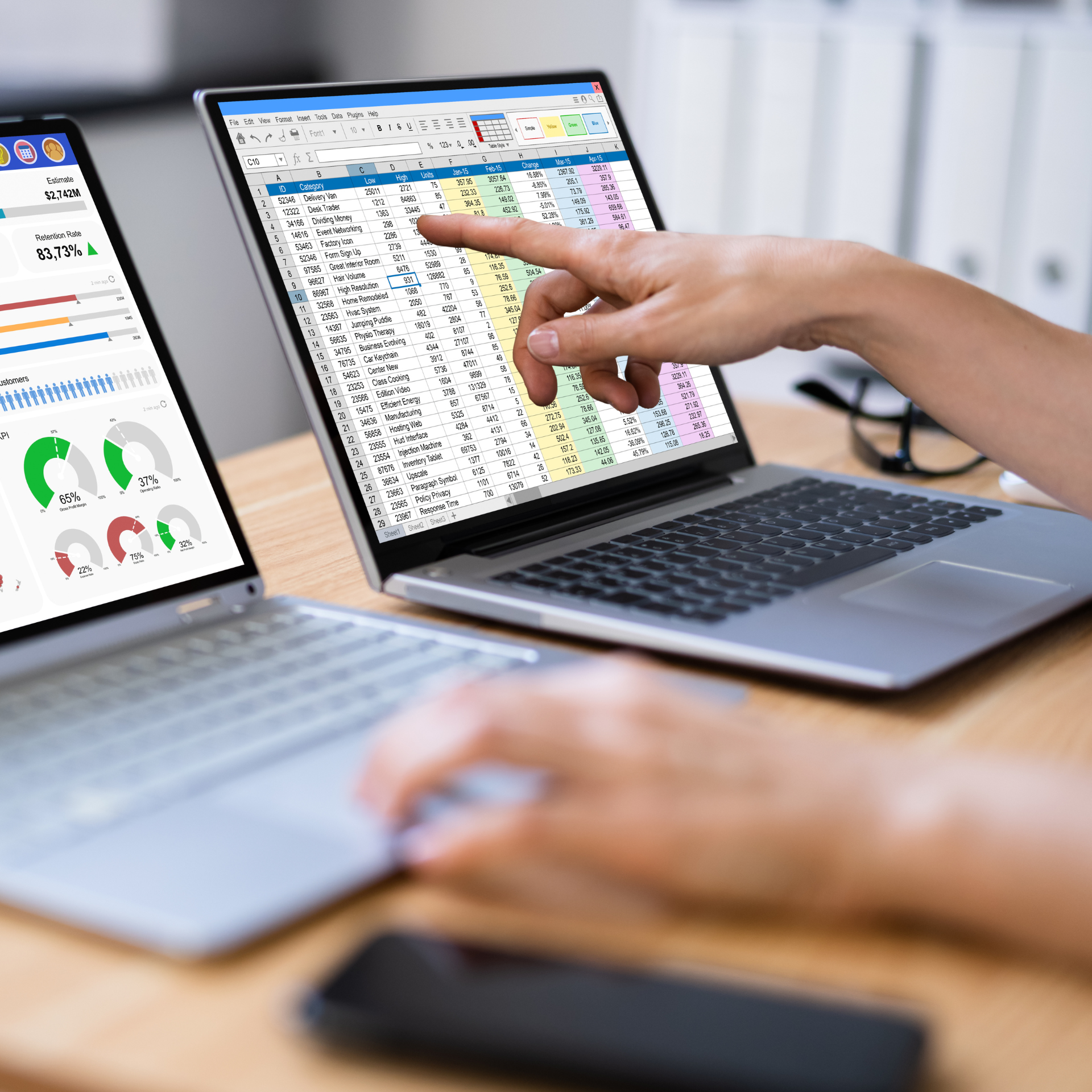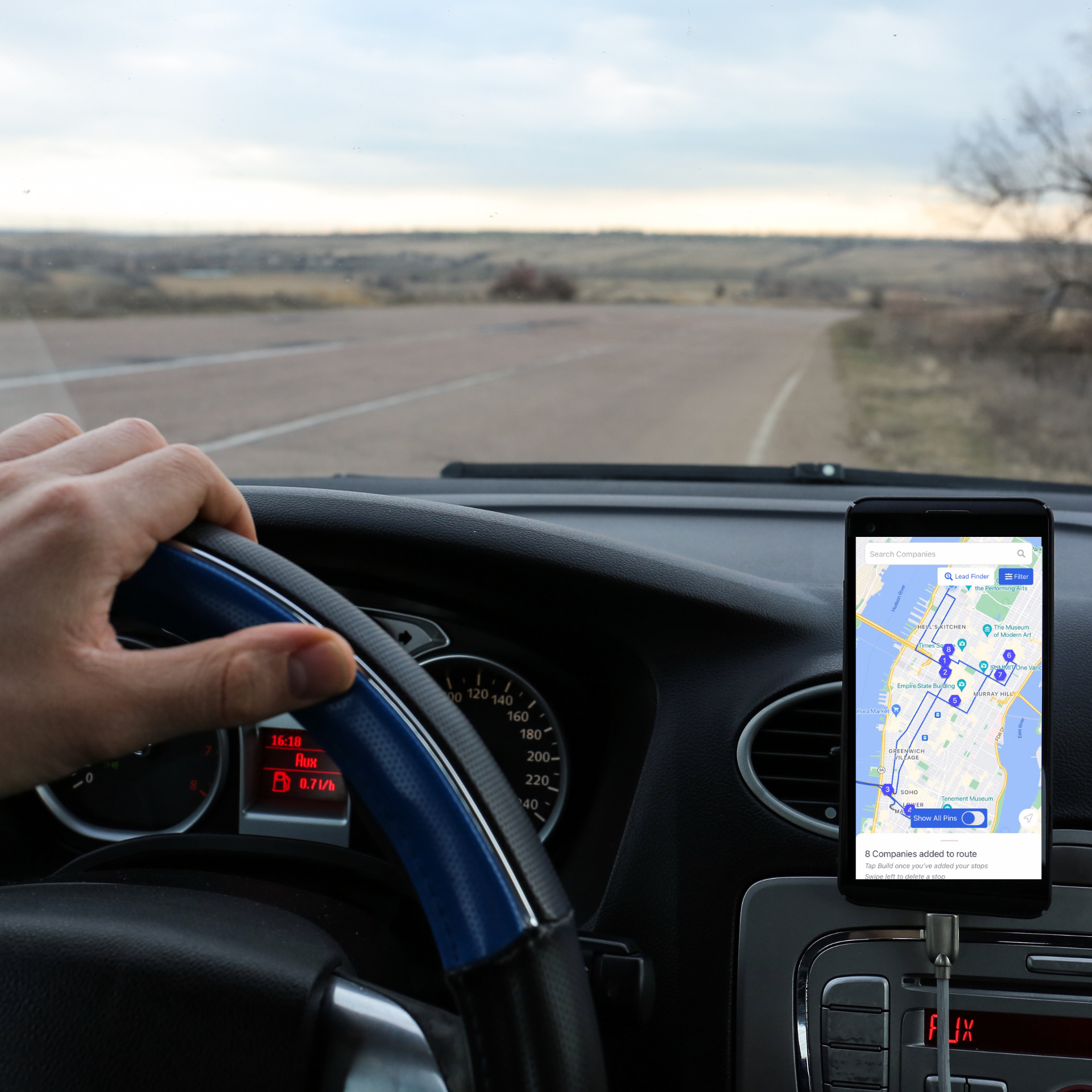Transforming from Lone Wolf Sales to Process-Driven Sales
Quick hit summary
The problem: Joe Anderson needed a CRM. And not just any CRM. One that could track the team’s sales funnel and kill their reliance on spreadsheets – once and for all.
The solution: Knowing rep experience was the key to success, Joe chose Map My Customers as Royal Brass and Hose’s CRM.
The results: Joe’s team no longer relies on endless spreadsheets and manual data entry. His team has a rep-first, mobile CRM – and one they want to use.
From OEM sales rep to Distribution Sales Manager
Joe Anderson was prepared for life to be different in distribution sales. Coming from the OEM side in the automotive aftermarket, he knew the products and customers well. What he didn’t know was how different it would be to manage a sales team.
While a manufacturing rep, Joe developed a solid relationship with the President at Royal Brass and Hose. A relationship so strong, the President recruited Joe to come onboard as a sales manager overseeing 29 reps. And then the real work began.
Joe describes his start as, “Distribution was exciting and new. But there was a problem at Royal Brass and Hose. We had two sales managers covering all of our territory managers and we had some end user sales reps that were working under the branches.”

Combatting the lone wolf sales culture
This all contributed to a lone wolf sales culture. Sales reps were completely independent and used their own systems for processing orders. As a result, they were protective over their customers and felt like they “owned” those accounts.
Because reps were isolated and focused on protecting their accounts, they also got too comfortable – acting more like customer support than sales representatives.
Not to mention, Joe had zero insight on specific customer data. The reps not only “owned” the accounts, they also owned all the data associated with the accounts. And that data lived anywhere from notebooks to spreadsheets to Post-it notes. Or worse, no where at all.
Joe knew something had to change.
The first thing he did was bring all the sales reps under one business unit. From there, he had to restructure the sales team to be a cohesive unit. This meant: one sales director, four territory managers and then 20+ reps divided between these territory managers.
This allowed for three things:
- More collaboration among the sales reps and managers
- A process-driven approach to driving more sales, called the sales funnel
- Better insight into sales rep activities and accounts
Building a sales process
Joe describes the sales funnel as the rep’s GPS. It’s telling them where they need to go, where their priorities are and where they should be focusing their time.
The Royal Brass and Hose sales funnel is broken down into 5 stages:
- Lead
- Decision maker acknowledges need
- Define solution criteria
- Evaluate alternatives
- Closed won/lost
So, not only should reps be prioritizing deals in stage 3 or 4, but they also need to make sure they have enough deals in stage 1 or 2 to meet their quota.
Joe says of the change in his reps, “Our reps are no longer mobile customer service people, they are sales reps. Where you’re going to go is where the opportunity is. Where you can be a value creator for our customer.”
So, what’s the problem here? Joe has a cohesive field sales unit, a process his reps follow and better data on the activities that drive deals through the funnel.


Chinks in the chain
Two problems arose once Royal Brass and Hose adopted this new sales approach:
- Data entry and analysis became an incredible administrative burden
- His reps had no software to facilitate customer relationships
To do sales funnel audits between Joe, the Field Sales director, and his territory managers and then between territory managers and individual reps was a frustrating mess.
They tracked everything in spreadsheets. That process looked something like:
- Managers and Director create inputs and formulas in the spreadsheet
- Managers email reps the spreadsheet to update with current funnel numbers
- Reps fill in data and email the spreadsheet back to managers
- Managers spend hours fixing formulas and data entry mistakes
- Director spends hours fixing the formulas that keep breaking
At the same time, Joe had to fill in for an open territory. So, he was pulling these manual spreadsheet reports and trying to figure out who to see and what they should talk about.
Once he finally had a list of accounts and where they were located, he had to pull account history from their ERP.
Joe says, “The ERP we have was probably state-of-the-art in 1996 and it has great purchasing data but it doesn’t have any customer account details.”
So, Joe would go to an account with the name of a single point of contact from the ERP and, “I’d ask for Tom and they’d say, ‘Well, you know, Tom died 10 years ago.’ It was embarrassing. And then I’m like, ‘Okay, this customer’s been buying from us for 20 years and I don’t even know the decision makers!’”
“I finally just said, ‘I give up. I’m frustrated. I need a CRM.’”
Choosing the right tools for the job
Joe knew the CRMs he’d used in the past would not work for his team at Royal Brass and Hose.
“I had experiences with Salesforce.com and I liked it if I was in my office all the time. But it was not focused on the field rep. To me, other CRMs are all about executive level insights. I don’t even think it was really good information for the regional sales manager.
I wanted something where a sales rep could be in their car, put in some notes on their mobile phone, check out a lead, look at their deals, whatever. They could do everything from a phone.”
As a former outside sales rep, Joe knew what his outside sales reps would find valuable.
“It had to be a tool the sales rep found valuable. If I was the sales rep, I wanted it to be something I’d want to use in the field. So that’s why Map My Customers was so important to me.”
Joe loved Map My Customers not only because reps would find it easy to map their customers, route their day and prioritize the sales funnel. But also because the app made it easy for reps to log data throughout their day. This meant an end to the maddening spreadsheet formulas.
“We run all our funnel audits right through Map My Customers. It’s live data and that has saved us so much time.”


Moving from execution to strategy
As Royal Brass and Hose expands its sales team, Map My Customers has also become an integral part of the new rep onboarding experience.
Joe can simply pull up the app and say, “Here are your tiered customers. Here’s how you can zero in on certain industry codes, opportunities, margin, product lines, who has what type of hydraulic crimpers. It’s a game changer.”
With Map My Customers, both new reps and tenured reps know where they’re going, how to prioritize their time and how to log quality sales calls.
This streamlined data entry process has also allowed the managers and directors to be more strategic.
With the influx of data. Joe says, “Now, I’m trying to increase the velocity of the sales cycle. How can we get the stages moving quickly?”
And managers can be more strategic in their conversations with reps. Now, it’s not an endless question of data integrity and formula errors. Managers can ask, “How can I help move this deal from stage 3 to 4? What do you need to fill the top of your sales funnel?”
As Royal Brass and Hose also updates its ERP system, Joe expects adoption of the entire tech stack across the organization. Not just the outside sales team.
And what this means for Joe is more fulfillment in his leadership role. “I want people to know that I’m here to help them grow. I want people to be successful around me. And that’s our customers. That’s our sales reps. That’s our operations, everything. How can I influence to help drive the message of Royal Brass and Hose better?”
And that all started with Joe’s original three initiatives as a new sales leader:
- More collaboration among the sales reps and managers
- A process-driven approach to driving more sales
- Better insight into sales rep activities and accounts
“It had to be a tool the sales rep found valuable. If I was the sales rep, I wanted it to be something I’d want to use in the field. So that’s why Map My Customers was so important to me.”
Joe Anderson
Director of Field Sales


